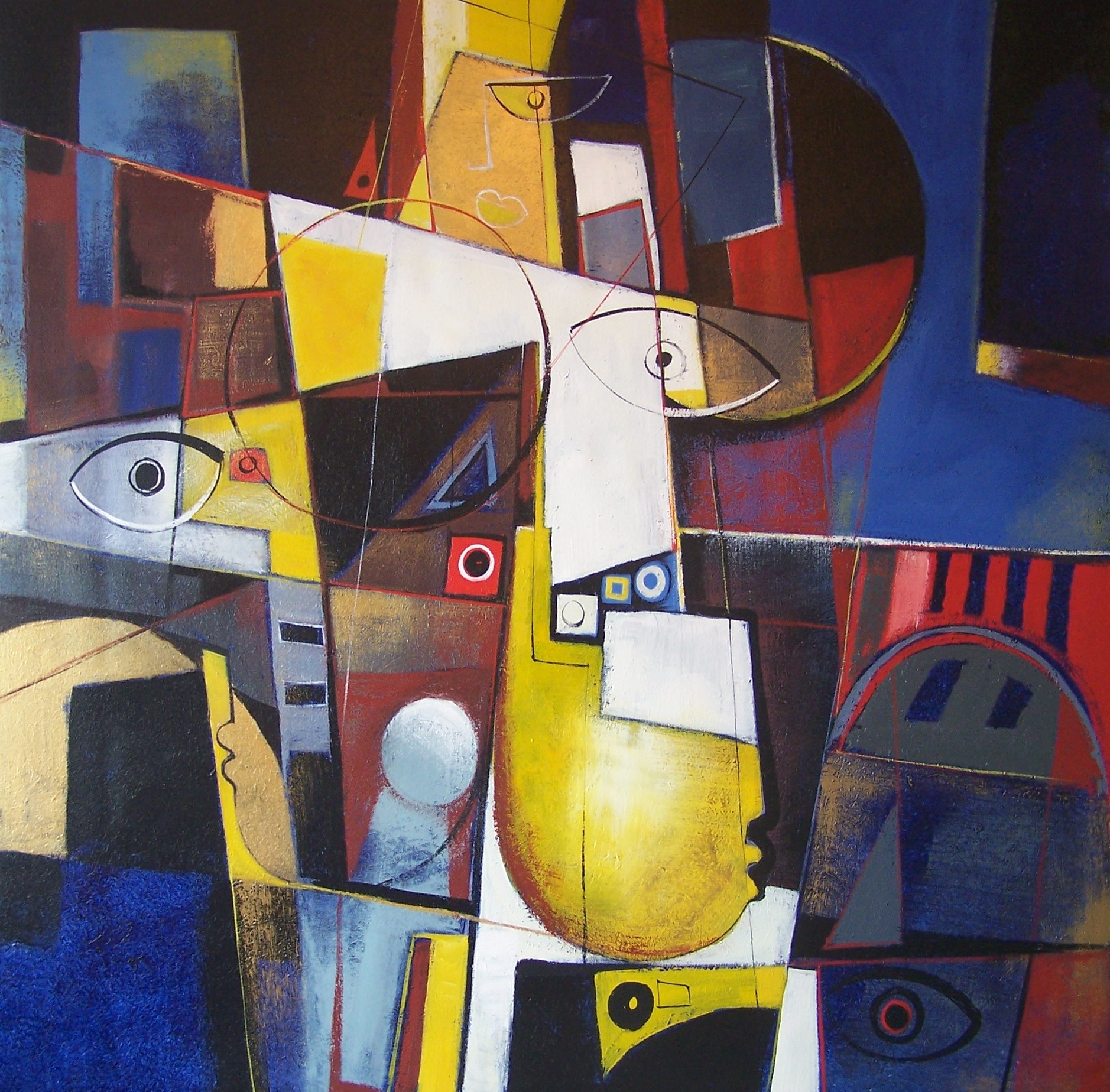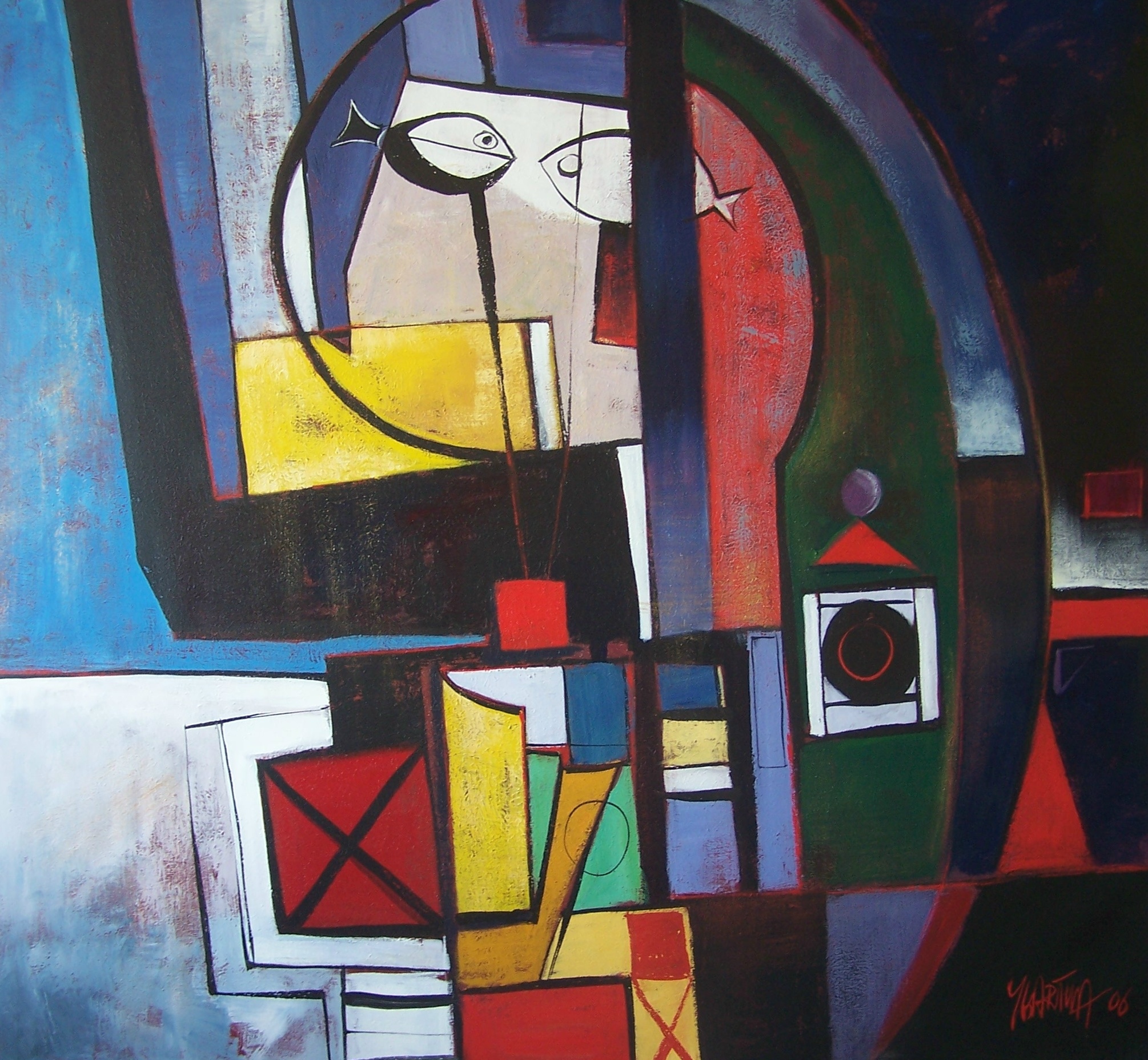Cubism Art. Over time, the geometric touches grew so intense. Synthetic cubism began when cubist artists started using textures and patterns in their paintings and experimenting with the collage form.

He called their shapes "little cubes.". Being an early Modernist movement, the definition of Cubism could. cubism: [noun] a style of art that stresses abstract structure at the expense of other pictorial elements especially by displaying several aspects of the same object simultaneously and by fragmenting the form of depicted objects. This was the "idea." For example, pick up any ordinary cup.
Fauvism had already laid the groundwork by experimenting with bright and unexpected colors, a great. Synthetic cubism began when cubist artists started using textures and patterns in their paintings and experimenting with the collage form. Cubism was one of the most influential visual art styles of the early twentieth century.
The Cubists challenged conventional forms of representation, such as perspective, which had been the rule since the Italian Renaissance. They brought different views of subjects (usually objects or figures) together in the same picture, resulting in paintings that appear fragmented and abstracted. Georges Braque was among the most well known artists who worked in the niche of Analytic Cubism.
It is still in the style of Analytical Cubism: muted colors, especially blue, grey, and pink, and a Picasso consisting of geometric objects and holding a color palette in his hand.
Cubism was one of the most influential visual art styles of the early twentieth century.
Close your eyes and imagine the cup. The cubist artist was much concerned with the structure, breaking down ideas and objects into smaller parts, and emphasizing different art angles. Their aim was to develop a new way of seeing which reflected the modern age.
First of all, Cubism marked a major turning point in the whole evolution of modernist art. Cubism was one of the most influential. By breaking objects and figures down into distinct areas or planes, the artists aimed to propose a.
Working side by side, they developed a visual language whose geometric planes and compressed space challenged what had been the defining conventions of representation in Western painting: the relationship between solid and void, figure and ground. Cubism is an artistic movement, created by Pablo Picasso and Georges Braque, which employs geometric shapes in depictions of human and other forms. The Cubist style emphasized the flat, two-dimensional surface of the picture plane, rejecting the traditional techniques of perspective, foreshortening, modeling, and chiaroscuro and refuting time-honoured theories that.
Close your eyes and imagine the cup. Cubism is an artistic movement, created by Pablo Picasso and Georges Braque, which employs geometric shapes in depictions of human and other forms. The Cubist style emphasized the flat, two-dimensional surface of the picture plane, rejecting the traditional techniques of perspective, foreshortening, modeling, and chiaroscuro and refuting time-honoured theories that.
Synthetic cubism began when cubist artists started using textures and patterns in their paintings and experimenting with the collage form. Cubism is an artistic movement, created by Pablo Picasso and Georges Braque, which employs geometric shapes in depictions of human and other forms. This inclusion of real objects in art was the beginning of one of.
The primary characteristic of Cubism was the simplification of arts and the refusal of the single viewpoint of art in favor of multiple points of view of binocular vision.
Close your eyes and imagine the cup.
This inclusion of real objects in art was the beginning of one of. Being an early Modernist movement, the definition of Cubism could. cubism: [noun] a style of art that stresses abstract structure at the expense of other pictorial elements especially by displaying several aspects of the same object simultaneously and by fragmenting the form of depicted objects. In Cubist artwork, objects are analyzed, broken up and reassembled in an abstracted form—instead of depicting objects from a single viewpoint, the artist depicts the subject from a multitude of viewpoints to.
First of all, Cubism marked a major turning point in the whole evolution of modernist art. Being an early Modernist movement, the definition of Cubism could. cubism: [noun] a style of art that stresses abstract structure at the expense of other pictorial elements especially by displaying several aspects of the same object simultaneously and by fragmenting the form of depicted objects. It inspired future movements including Futurism, Constructivism, Dada and Surrealism.
It has also inspired subsequent styles in architecture and literature. Building on the geometric abstraction of the Fauvism movement, Cubism broke many of the rules of traditional western art styles. Cubism is a kind of Realism.
What is cubism and why was it so radical? Popular cubism artworks were under the Blue Period. First of all, Cubism marked a major turning point in the whole evolution of modernist art.
Synthetic cubism began when cubist artists started using textures and patterns in their paintings and experimenting with the collage form. This was the "idea." For example, pick up any ordinary cup. First of all, Cubism marked a major turning point in the whole evolution of modernist art.
A ceramist, painter, printmaker, sculptor, and stage designer, Picasso was known for co-inventing the style of art known as collage, inventing constructed sculpture, and co-founding the Cubist movement.
Working side by side, they developed a visual language whose geometric planes and compressed space challenged what had been the defining conventions of representation in Western painting: the relationship between solid and void, figure and ground.
Besides, there was the Rose Period, African Influenced Period, Analytic Period, and Synthetic Period. This inclusion of real objects in art was the beginning of one of. The Cubists challenged conventional forms of representation, such as perspective, which had been the rule since the Italian Renaissance.
Cubism is an artistic movement, created by Pablo Picasso and Georges Braque, which employs geometric shapes in depictions of human and other forms. The Cubist style emphasized the flat, two-dimensional surface of the picture plane, rejecting the traditional techniques of perspective, foreshortening, modeling, and chiaroscuro and refuting time-honoured theories that. Chances are the mouth of the cup is round.
Building on the geometric abstraction of the Fauvism movement, Cubism broke many of the rules of traditional western art styles. The Cubists challenged conventional forms of representation, such as perspective, which had been the rule since the Italian Renaissance. First of all, Cubism marked a major turning point in the whole evolution of modernist art.
Synthetic Cubism showcases an interest in still-life depictions, rendered as either paintings or collage art.
This inclusion of real objects in art was the beginning of one of.
This article is concerned with the very important Cubist art movement with which Picasso. Cubism was an attempt by artists to revitalise the tired traditions of Western art which they believed had run their course. The cubist artist was much concerned with the structure, breaking down ideas and objects into smaller parts, and emphasizing different art angles.
This was the "idea." For example, pick up any ordinary cup. Cubism was one of the most influential. Besides, there was the Rose Period, African Influenced Period, Analytic Period, and Synthetic Period.
Cubism was an attempt by artists to revitalise the tired traditions of Western art which they believed had run their course. Picasso's life will be discussed in another article. Their aim was to develop a new way of seeing which reflected the modern age.
It is known for its deconstructed, geometric. Chances are the mouth of the cup is round. Man with a Guitar - Georges Braque.
















